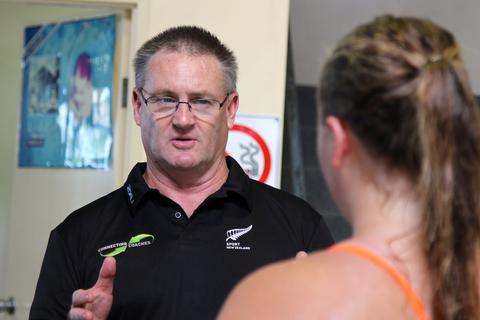The Passion to Prepare = or > The Potential to Perform

What are we all chasing in high performance sport?
What is high performance coaching seeking to achieve?
Why do we focus so much on player leadership?
Why do we spend so much time talking about professionalism, standards, attitudes, commitment and passion?
Because we want to achieve one thing: we want to create an environment where our athletes’ Passion to Prepare is equal to or greater than their Potential to Perform.
Passion and Potential – the key.
It’s the key question in high performance sport: how do I create an environment where the athletes’ passion to prepare – their commitment to preparation, training, off field professionalism, etc is equal to or greater than their potential (talent) to perform?
In some way, we grapple with this question and the many related questions everyday:
1. Do I recruit on talent or on attitude, personality and passion to succeed?
Answer – in a perfect world, we want talented athletes with the commitment to succeed: aptitude plus attitude.
2. How can I create an environment where each individual athlete is competing to their full potential?
Answer – create an environment where each athlete consistently demonstrates a passion to prepare.
3. How can I help my athletes realise their performance goals?
Answer – by ensuring each athlete prepares better – more consistently – than anyone in their event (or role or position) in the competition.
All these issues have the same basic philosophy – matching ability with attitude, talent with tenacity, genetics with grit and potential with performance. It’s the key element in quality coaching – engaging the athlete fully – mind, heart, body and soul with their program so that they embrace excellence in everything they do.
This is critical to anyone who wants to succeed at the top level: talent is not enough – unless that talent is driven by an unrelenting desire to be the best and that desire is supported by an uncompromising commitment to excellence in all aspects of preparation.
The Four Types of Athletes.
There are basically four different types of athletes: the PALTS, the PAHTs, the GALTs and the GAHTs.
PALTs: Poor on Attitude – Low on Talent: PALTs lack both the attitude and aptitude to be successful in high performance sport and therefore don’t make it much past schools level competition – (and usually then they are only involved in sport because they have been forced to be involved);
PAHTs: Poor on Attitude – High on Talent: In many ways, PAHTs are the most challenging and demanding athletes to coach. They have the physical talent and natural physical abilities to succeed but their lack of commitment, determination and professionalism bring more frustration than fun for coaches. Many of the issues involving team discipline come from PAHTs. Often, PAHTs have been early maturers or athletes who demonstrated a precocious talent when they were young and never learnt the key preparation fundamentals of discipline, hard work, commitment and perseverance: they had too much – too soon – too easy.
GALTSs: Great on Attitude – Low on Talent: The vast majority of elite athletes, even at professional level are GALTS: athletes with some talent (otherwise they could not have got to professional level) but whose great strengths are their attitude, their dedication, their discipline, their values, their off field professionalism, their honesty, their desire to play the game and their passion to prepare. Coaches are usually great at working with these athletes…they have to be…because they see so many of them;
GAHTs: Great on Attitude – High on Talent: Possessing the “complete package” – GAHTs are the champions, the world record holders, the Olympic Gold medalists, the All-Stars players, the MVPS, the best of the best. GAHTs are harder to hide than to find – and will succeed regardless of the situation, the challenge, the environment, the adversity or the difficulties they face.
The big question then is can you turn a PALT, PAHT or GALT into a GAHT? And if so, how?
Without doubt, when I work with coaches and teams, this one issue dominates all others: “how do I ensure every player in my team is preparing – consistently – to the best of their ability – so that their passion to prepare is equal to or greater than their potential to perform”.
Investing in a world class high performance environment (i.e. anything you can build or buy), gym facilities, sports science, recovery centres and similar high performance tools is useless without also investing in the human factor – investing in creating a culture where each player takes full advantage of the high performance environment through their passion to prepare.
Which would you rather have? A brand new gym, with the best of the best machines, training equipment and power training devices but where the players arrive late, perform their routines with poor technique, cut reps out of their programs and finish early…. Or an older gym, with ten year old machines, equipment and devices but where every player works to their full potential every time they walk in the gym door?
The answer is of course…..we want both: we want the latest in high performance training tools and we want a winning attitude to drive them. We want the latest in high performance training tools and we want a winning attitude to drive them.
Can we have both?
Yes we can.
Engagement – Engagement – Engagement.
The key to all of this lies in coaching and in particular in coaching by engagement – and not coaching by enforcement.
The effectiveness of training programs, workout designs, skill development routines and fitness activities are dependent on how engaged the athlete is in the activities.
A brilliantly designed workout, with skillfully crafted drills and decision making activities is of little value to athletes who are not interested, not concentrating, not focused and not engaged in the program.
The one thing that separates great coaching from average coaching is engagement: it’s what it’s all about. The ability to consistently engage the hearts and minds of your athletes – it’s what we strive for – it is the very essence of coaching – it is what makes coaches (and athletes) feel alive.
• A training session without engagement is just a bunch of people exercising together;
• Communication without engagement is just talking;
• Sports science without engagement is just measurement;
• Periodisation without engagement is just a plan;
• Having the world’s best facilities and equipment without engagement is just window dressing;
• Coaching without engagement is … not coaching.
So why is engagement so critical? And it is critical – it underpins everything.
Because athletes (and coaches and managers and staff for that matter) who are truly engaged with what they are doing, consistently train, prepare and compete to their full potential and … from potential comes peak performance.
No one wins by giving anything less than their best: winning happens by consistently preparing and competing to your full potential.
And this is the real gift that all the great coaches possess – to be able to turn involvement into commitment – to be able to turn desire into action and to be able to turn potential into performance.
Wayne Goldsmith
© 2012, Sports Coaching Brain. All rights reserved. This post can not be reproduced in full or in part without the expressed consent of the author Wayne Goldsmith



2 Comments
James Marshall · September 11, 2012 at 7:45 pm
Hi Wayne,
this looks similar to something I read by Tim Noakes a few years ago. He said that the Low talent, highly motivated individuals were most susceptible to overtraining because they tried to make the most of what they had.
I don’t think you can turn donkeys into racehorses though: just very fast donkeys. Took me a long time to come to terms with my donkeyness!
Matt · October 16, 2012 at 7:32 pm
Wayne,
A fantastic insight. Thanks